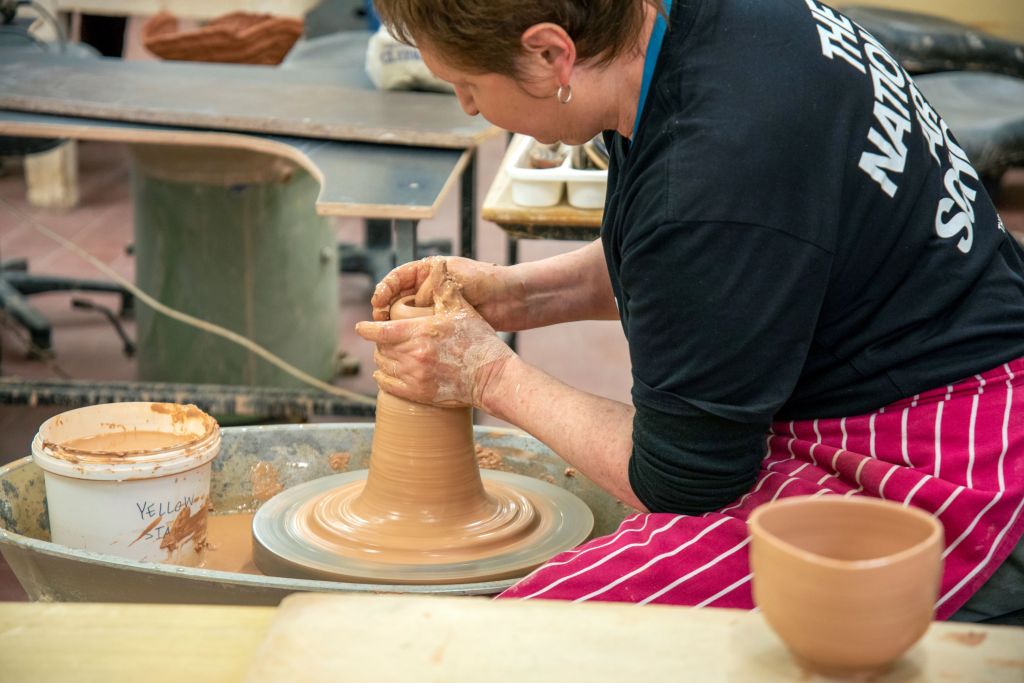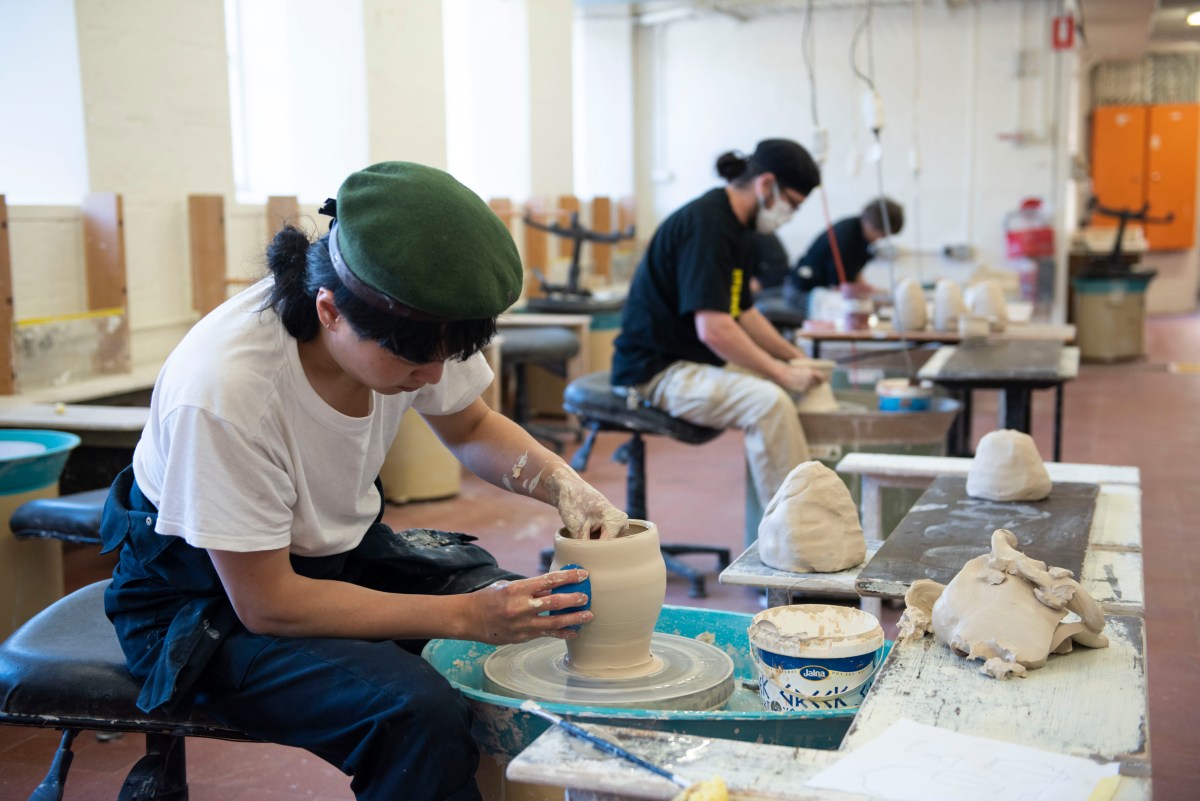Understanding your aspirations is more important than you perhaps think, when it comes to making the commitment to studying to become a professional visual artist.
One of the best ways to take the pulse on how your dreams fit with the reality is to simply walk through the studios and talk to the teachers at an arts school open day.
The National Art School – NAS as it is known – will be throwing open its heritage campus and state-of-the-art learning studios on Saturday 2 September for its annual Open Day.
Head of Undergraduate Studies at NAS, Lorraine Kypiotis says, ‘Come and see how you feel in the art school. Sure, you can read up and ask questions over the phone, but when you are there, you are surrounded by it! You can see students making – and ask them questions. You can meet the teachers; they are all practising artists.’
She adds, ‘And if you can’t make it to the open day, you can still come onto the campus and soak in the vibe, and see one of our amazing exhibitions at the NAS Gallery. We currently are showing Radiance: the art of Elisabeth Cummings, a NAS alumna, which opened 18 August. And of course, at the end of the year there are our Graduate and Postgraduate shows. The opening nights are a great way to experience the campus.’
What is different about NAS, compared to other art schools?
Kypiotis says that, unlike in art schools based within universities, the students at NAS experience solid studio-based training. ‘We are just about art,’ she explains. ‘A lot of other art schools have students from other degrees taking art courses.
‘In the first year, our students will have around 25 hours of face-to-face teaching each week – that is 4.5 days in studio with a tutor who is with them all the time. Plus, our lecturers are all practising artists and historians, so they know what it is like to live those aspirations. That is really solid studio training.’
In the first year, students do an introduction to all the major disciplines – ceramics, drawing, painting, photomedia, printmaking, sculpture, art history and theory – selecting their major in their second year of study. ‘This way they can make a well-informed decision,’ says Kypiotis. ‘And drawing and art history are core subjects across all three years – essentially, they underpin and inform all the studio areas.

How do you know if you have what it takes to be accepted?
For any artist, putting yourself out there is often filled with trepidation and self-doubt. Kypiotis says that to succeed as an artist today, you need drive.
‘Obviously you need some level of skill, but we are not expecting you to be Rembrandts and Michelangelos straight off,’ she says, adding that a ‘passion for making art’ is a priority.
She also recommends a level of resilience ‘to keep up with it, manage your time and to soldier the critics’.
‘I often refer to that first year as a roller coaster ride. There are great ups and great downs. It goes really quickly, but it is so exciting,’ Kypiotis adds.
‘It is not an easy choice to be an artist. You have to become your best spokesperson and marketing agent. We do a lot of critiques. They are not attacks, but are about learning. Part of being an artist is rolling with punches – to get back up and do it again. You also have to learn not to take “no” as the final answer; there is never one road forward. There are many paths,’ she tells ArtsHub.
What is a portfolio, and how do you prepare it?
‘People get too caught up on “what is a portfolio?” It could be anything from a selection of 12 to 20 works that show a breadth of what you do, or a focus on one project, which is what a lot of school leavers do. You can bring in physical objects to show – we actually insist you bring in two drawings when you interview with us – or you can step through your work on a laptop,’ explains Kypiotis.
The one thing that is absolutely key to presenting your portfolio at interview is your visual arts process diary, she says. ‘We want to see the process of thinking through an artwork – how you come up with those ideas, think through influences and find your own language.’
And while mature students may not be in the habit of diarising their creative journeys, Kypiotis encourages candidates to ‘start keeping notes; don’t over think it – just start noting things down as you start to consider studying’.
‘I would also encourage anyone considering art school to ask why they think NAS is a good fit for them – this is a question they will be asked in the interview. The students have to think about their future ambitions: what they may want to be, and how they want to use this degree to springboard to that aspiration.’
Her final advice, however, is clear. ‘Commitment, dedication and passion are what we are looking for. We hear them a lot, but you need to ask yourself: can you work night after night on a project and still be hungry for more?’
If you still have doubts after all that, Kypiotis suggests trying one of NAS’s many short courses to get a taste – take the journey slowly, and see if the shoe fits.
NAS Open Day is on campus, 156 Forbes Street, Darlinghurst (Sydney) on Saturday 2 September, from 10am – 4pm, free entry. Book to attend.
Radiance: the art of Elisabeth Cummings is showing until 21 October.





